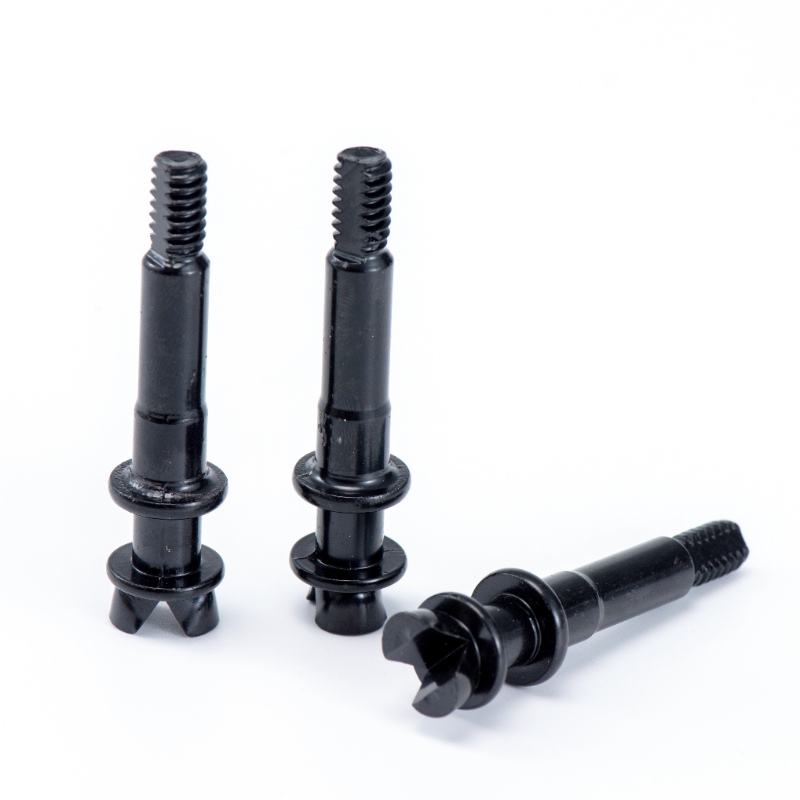Double washer Screws, also known as washer Screws or SEMS Screws, are a specialized type of fastener that integrates a screw or bolt with two pre-assembled washers. This design typically consists of a standard machine screw (e.g., Phillips or slotted drive) with a split lock washer seated beneath a flat washer, all pre-assembled as a single, unified component. The primary function is to provide a secure, vibration-resistant joint while distributing the clamping load over a wider area than a standard screw alone, thereby protecting the surface of the assembled material and preventing loosening under dynamic loads.

Characteristics and Technical Data
The defining characteristic of these Fasteners is the dual-washer assembly. The flat washer typically has an outer diameter ranging from 8mm to 24mm for common sizes (e.g., M4 to M12 screws), and it serves to distribute the axial clamping force, reducing surface pressure and preventing damage to soft materials. Beneath it, the split lock washer (often made from spring steel with a hardness of 42-50 HRC) exerts a spring force against the bolt head and the substrate, creating friction that resists rotational loosening caused by vibration or thermal cycling. The screw itself is commonly manufactured from medium-carbon steel grades like Grade 5 (tensile strength ~120,000 psi) or Grade 8 (tensile strength ~150,000 psi), and it may feature various corrosion-resistant coatings such as zinc plating (5-15µm thick) or hot-dip galvanizing for harsh environments. The pre-assembled nature eliminates the need for manual washer placement, streamlining assembly and ensuring the washers are never misplaced, which increases installation efficiency and reliability.
Application Scenarios
The unique combination of load distribution and vibration resistance makes double washer screws indispensable in numerous industries.
Automotive Manufacturing: They are extensively used in securing components like brake calipers, engine mounts, and interior trim panels where constant vibration is a major concern. The lock washer prevents critical fasteners from backing out, which is vital for vehicle safety and longevity.
Electronics and Appliance Assembly: In the assembly of washing machines, dryers, and computer cases, these screws secure panels and internal components. The flat washer prevents damage to painted or delicate sheet metal surfaces while the lock washer ensures connections remain tight despite the vibrations generated by motors and fans.
Construction and Metal Fabrication: They are employed in securing structural brackets, HVAC ducting, and metal framing. The wide bearing surface of the flat washer is crucial when fastening into materials like wood or thin-gauge steel, preventing pull-through and maintaining joint integrity under structural loads.
Agricultural and Heavy Machinery: Equipment such as tractors and conveyors subjects fasteners to extreme vibrations and shock loads. Double washer screws are used in attachment points for panels, guards, and implements to provide a robust, maintenance-free connection.
Furniture Manufacturing: Used in assembling office furniture, shelving units, and outdoor equipment, where they provide a strong, rattle-proof joint that can withstand repeated use and movement.
Maintenance Procedures
Proper maintenance is essential to ensure the long-term reliability and performance of double washer screws, especially in demanding applications.
Initial Installation: The most critical maintenance step is correct initial installation. Drive the screw until the flat washer is seated firmly against the substrate. Avoid over-torquing, as this can flatten the lock washer excessively, compromising its spring action and anti-vibration properties. Always refer to the manufacturer's recommended torque specifications based on the screw's diameter, grade, and the materials being joined.
Regular Inspection: Implement a periodic inspection schedule for critical applications. Visually check for signs of loosening, corrosion, or damage. In high-vibration environments, a torque check can be performed to ensure the fastener has maintained its preload. Any screw that has loosened significantly should be replaced, as the lock washer may have lost its tension.
Corrosion Prevention: For screws used outdoors or in corrosive environments (e.g., near chemicals or saltwater), inspect for rust or degradation of the protective coating. Applying a supplemental anti-seize compound or thread-locking fluid during installation can provide additional protection against corrosion and loosening, though this may not be necessary for pre-coated screws.
Replacement: Double washer screws are generally designed for single use, particularly the lock washer component. During disassembly for repair, the lock washer often loses its tension and should not be reused. Always replace with an identical new screw and washer assembly to guarantee the specified performance of the joint. Reusing a fatigued lock washer can lead to joint failure.
Cleaning: Keep threaded holes and the screw threads themselves free of debris, dirt, and old threadlocker residue before installation. This ensures accurate torque readings and proper clamping force. For existing assemblies, cleaning the exposed portions of the screw with a wire brush can help during inspections.
Storage: Store unused screws in a cool, dry environment to prevent premature corrosion of the coating. Keeping them in their original packaging protects them from physical damage and moisture.





